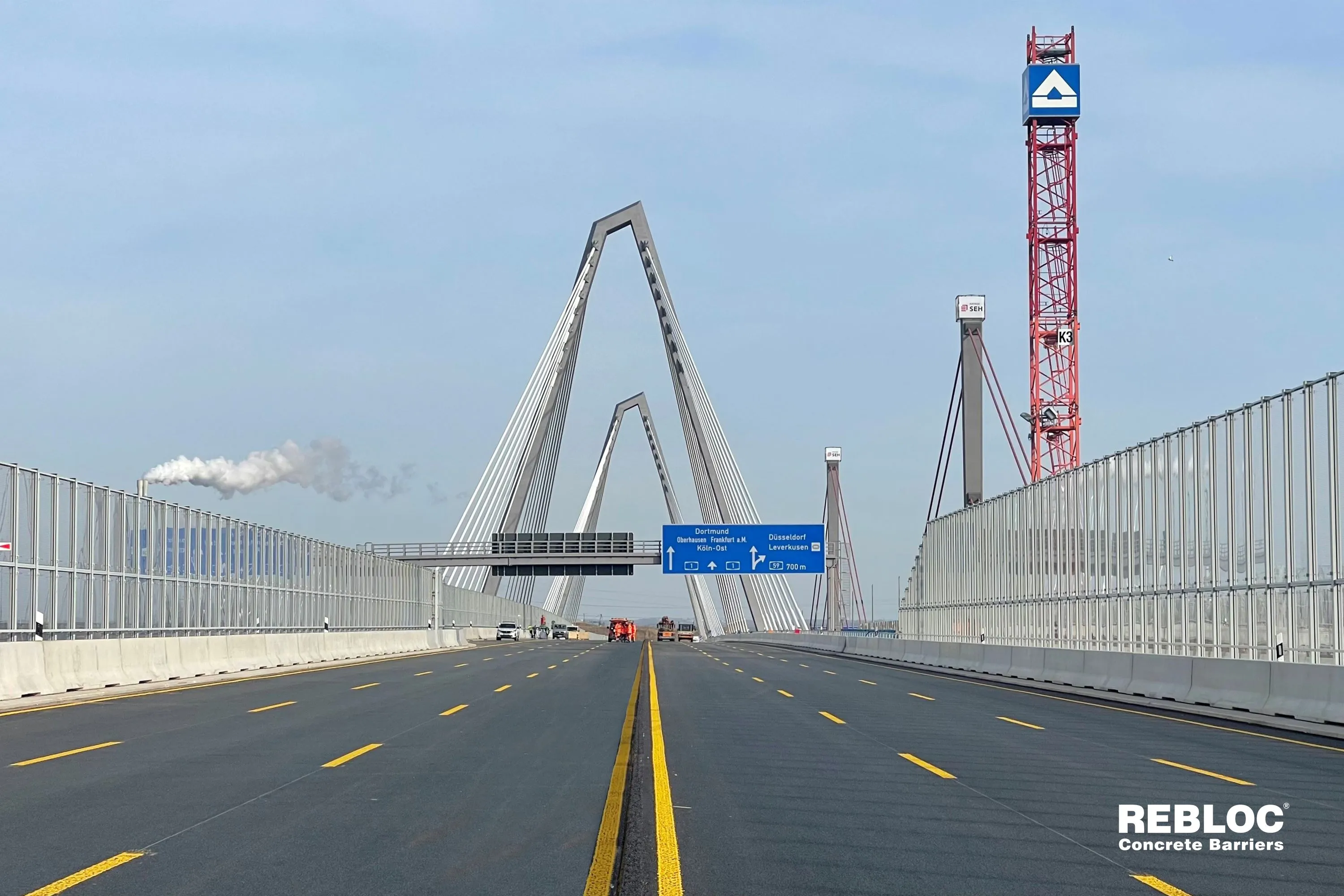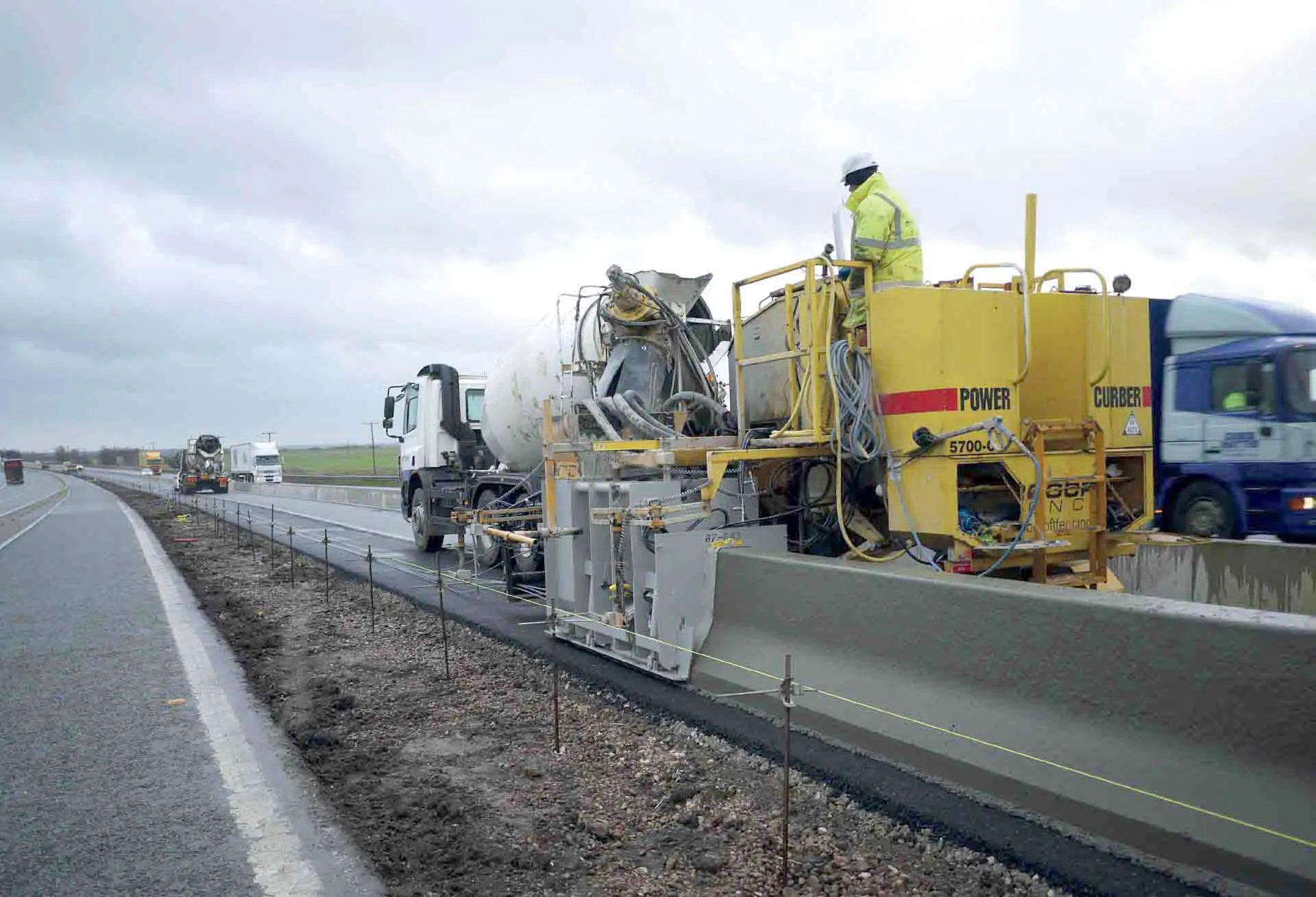
The new Rheinbrücke A1 Leverkusen is part of a major traffic junction in Germany. The ambitious project includes the replacement of the Leverkusen Rheinbrücke as well as the expansion of the A1 motorway between Cologne-Niehl and the Leverkusen-West motorway junction.
At the same time, the bridge structures at the Leverkusen-West motorway junction are also being comprehensively renewed.
Replacement of the old Rheinbrücke consists of two individual, parallell-running bridge structures. The first part of the new construction was built directly north of the existing bridge.
Since February this year, traffic has been flowing over the new section. Before construction of the second bridge begins, the old Rheinbrücke will be demolished.
In the final state, both bridges together will provide eight continuous lanes - four in each direction. In addition, the entrances and exits on both sides of the Rhine River - both at the Leverkusen-West and the Cologne-Niehl junction – will lead onto and off the bridge with dual lanes. This will result in up to 12 lanes.
Moreover, 3.25m wide bicycle and pedestrian paths are planned for both sides, which are separated from the traffic lanes by noise barriers. The Rhine flows under the bridge as the main traffic artery for inland shipping. There is much to protect and the conditions are demanding.
Challenges and innovation
The entire construction project places high demands on the performance of the vehicle restraint systems - VRS. The bridge itself, with a steel cap as an orthotropic plate with a thin-layer coating as corrosion protection, requires a specially tailored VRS concept. Any type of anchorage into this steel cap leads to problems in construction execution as well as in the further operation and potentially necessary repairs.
However, the challenges go far beyond construction of the bridge. Large parts of the route lie directly in the sealing of a landfill, which places high demands on the VRS. In many areas, an anchorage into the ground is not allowed. At the same time, there is little space available for the effective range of the VRS
For the Rheinbrücke, the highest containment level H4b is required for the access ramps and parts of the landfill sealing. Therefore, the bridge itself and the access ramps are equipped with the REBLOC 100 SF(P) H4b/W4 system.
Meanwhile, the areas with the landfill drainage channels and noise barriers are also secured by this system. In areas, where minimal ground anchorage is allowed, the REBLOC 84XEAL H2/W1 system with an embedding depth of 40mm in asphalt, is used.
REBLOC precast concrete VRS
The chosen precast concrete VRS proves to be the ideal solution for the whole area. It secures the entire route continuously with tested and approved systems and transitions. The elements do not only offer visual appeal but also exceptional resistant to impacts - most minor accidents do not require any repairs.
An example of this is the conducted TB11 test - car weighing 900kg, traveling at 100km/h with a 20° impact angle. This did not cause any damage to the safety barrier. In addition, the unanchored H4b wall on the steel cap ensures the protection of the cap even when severely impacted.
As well, in case of a severe impact, damaged elements can be replaced quickly and easily at any time of the year independent of the weather.
The completion of the first new Rheinbrücke marks a milestone for the infrastructure in North Rhine-Westphalia. The new Rheinbrücke A1 Leverkusen will not only improve traffic flow but also strengthen the mobility and economy of the region sustainably. The upcoming progress of this impressive project remains exciting.









